The Dog Days Of Summer: Delightful Dog Figurines
Smack Dab In The Middle: Design Trends Of The Mid-20th Century
By Donald-Brian Johnson - September 03, 2021
The average dog is a nicer person than the average person. Andy Rooney Well. Whod dare argue with good ol Andy? (Except maybe a cat). Dogs have been hailed as mans (and womans) best friends since pretty much forever. Cave drawings of dogs date from 6,000 years back. Anubis, the Egyptian god who guarded the departed, was often depicted as a black dog. And theres a dog mosaic in the ruins of Pompeiis House of the Tragic Poet, complete with a warning in Latin which roughly translates as Beware of the dog. So, dogs have been around for awhile, but over the centuries their status has changed. First relegated solely to useful tasks (herding sheep, helping hunters, guarding the home), dogs quickly won their way into human hearts. Soon, their usefulness was on a par with (and often outshone by) their unbreakable bond with human companions. Dogs first came into their own as art subjects during the Renaissance. Portraits of noble folk often featured a dog resting comfortably on a ladys lap or keeping watch beside the lord of the manor. In later hunting scenes, dogs took center stage, bounding past galloping horses and red jacket-clad hunters in pursuit of an elusive fox. By the late 1800s, pooches were at their pinnacle, immortalized in Staffordshire ceramics and even finding their way into popular ad campaigns. One series for a cigar company featured a poker table populated by cigar-chomping, poker-playing dogs. The title, Dogs Playing Poker. Dogs were now a part of pop culture. As the 20th century rolled into being, Lassie, Rin Tin Tin, Old Yeller, Snoopy, and numerous others joined the pack. During the mid-20th century, nearly every manufacturer of note turned out at least a few dog representations. Howard Pierce offered abstract renditions of long-eared basset hounds and extra-elongated dachshunds. The Morten Studios soulful-eyed cockers were guaranteed heartbreakers. Van Briggle took time away from churning out all those vases and dishes to come up with a pair of clay terriers. And over at Ceramic Arts Studio, it was definitely a dogs life. Designer Betty Harringtons merry menagerie included a variety of breeds, from sassy poodle Suzette to Sooty and Taffy, an adorable pair of Scottish terriers. Most dog figurines were intended to be just that: static figurines. You sat them on a shelf, looked at them, and they looked back. Others, however, did double-duty. Sonny and Honey, two Ceramic Arts spaniels, were also banks. The California Cleminsons debuted Willie the Watch Dogi. Noted the hang tag, His tail up tight holds rings just right, and your wrist watch fits where Willie sits. Other makers also heard the dog whistle of increased sales and marketed a varied array of multi-function figurines. There were dog letter-holders (wire partitions between head and tail held the letters), dog planters and vases, dog inkwells, dog teapots, dog salt-and-peppers, dresser jars, book ends, bobble heads, pencil holders, and lamps. Thanks to its adaptability, ceramic was the preferred medium; however, dog figurines and dog what-have-yous could also be found made of wood, plastic, glass, sandstone, and metal. Particular breeds dominated the figural dog park, due in part to the familiarity theyd bred in other forms. Lassie and Rinty ruled the airwaves, pawing the way for plenty of collie and German shepherd figurines. Franklin D. Roosevelts longtime pal Fala (hes even buried near FDR at Hyde Park) had consumers hounding stores for Scottie replicas. Since figural firms worked doggedly at turning out as many items as their customers demanded, the supply today remains plentiful. In most cases, collectors will find the asking prices have no bark and no bite; most are in the under $50. There are plenty of rational reasons a person can give for collecting dog figurines--the designer, the style, the skill of execution-- but heres what it really boils down to: dogs love us. And we love em right back. Dog figurines courtesy of Maureen Maher. Photo Associate: Hank Kuhlmann All photos by Donald-Brian Johnson. Donald-Brian Johnson is the co-author of numerous Schiffer books on design and collectibles, including Postwar Pop, a collection of his columns. He has a cat, but wouldnt mind adding a Great Pyrenees. Please address inquiries to: donaldbrian@msn.com.




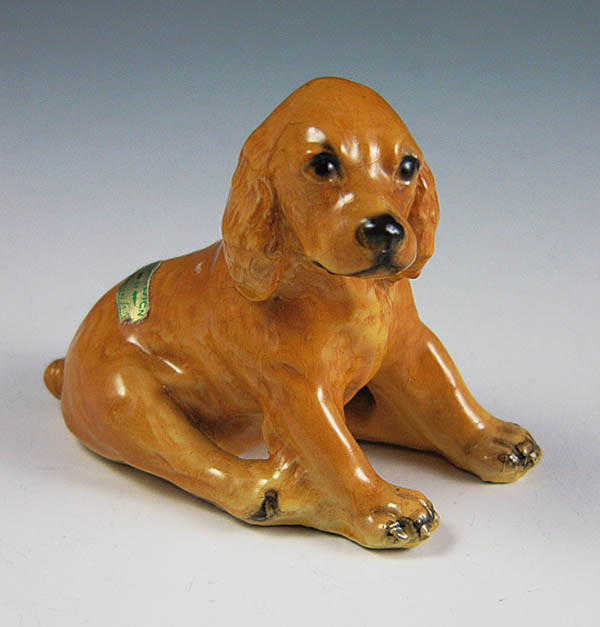
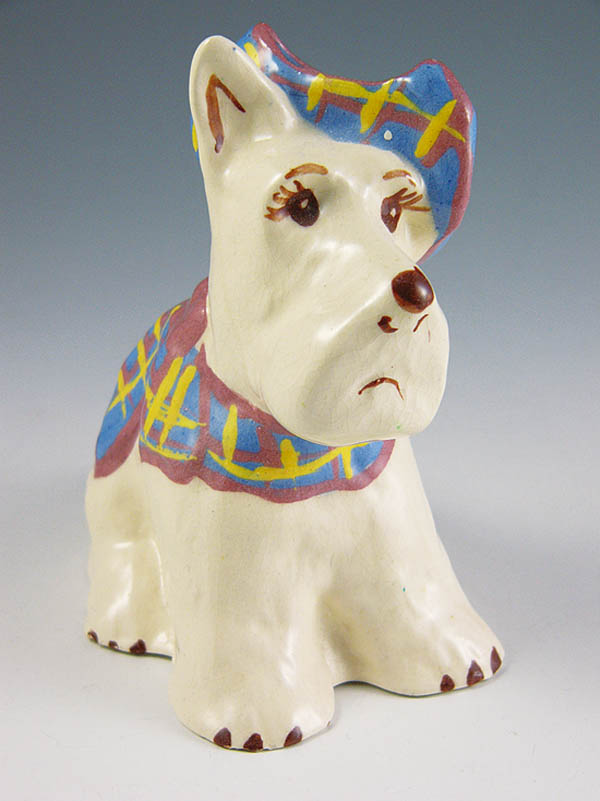
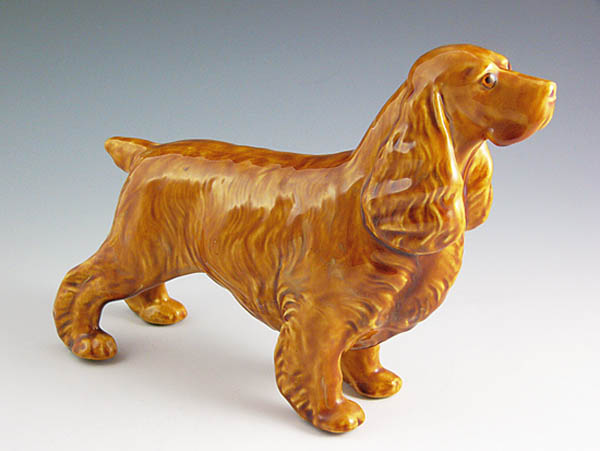


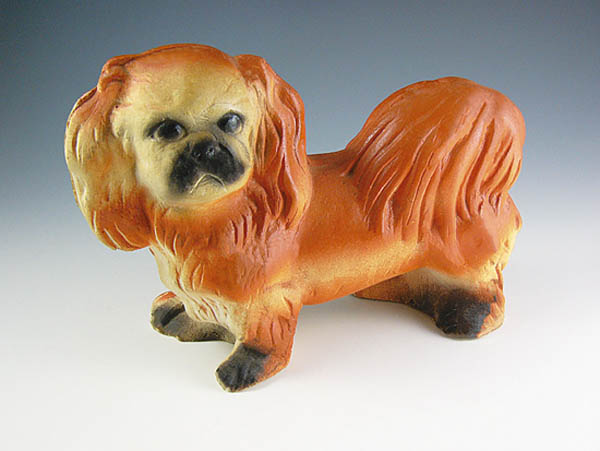
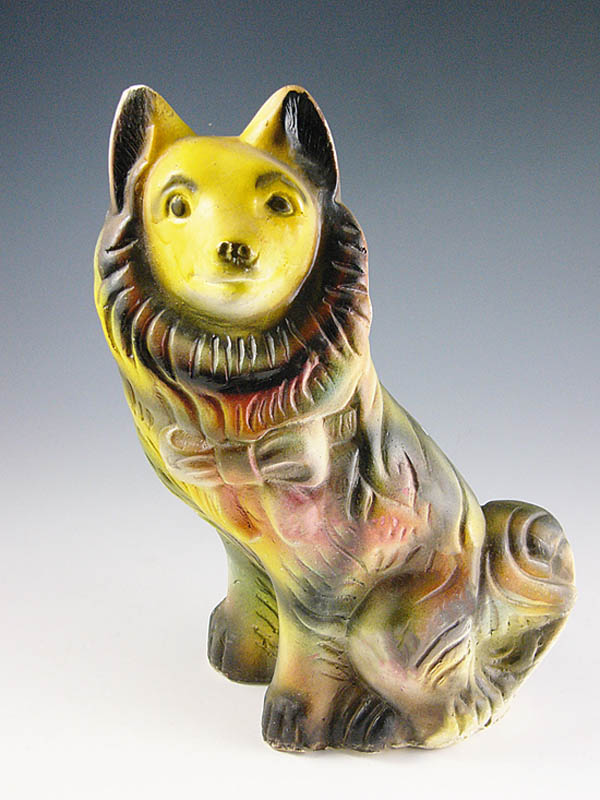

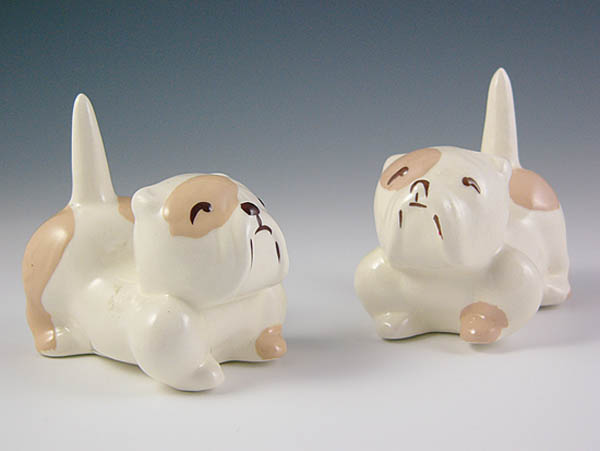

SHARE
PRINT